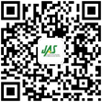2021, 8(8): 1416-1427.
doi: 10.1109/JAS.2021.1004054
Abstract:
Developing and optimizing fuzzy relation equations are of great relevance in system modeling, which involves analysis of numerous fuzzy rules. As each rule varies with respect to its level of influence, it is advocated that the performance of a fuzzy relation equation is strongly related to a subset of fuzzy rules obtained by removing those without significant relevance. In this study, we establish a novel framework of developing granular fuzzy relation equations that concerns the determination of an optimal subset of fuzzy rules. The subset of rules is selected by maximizing their performance of the obtained solutions. The originality of this study is conducted in the following ways. Starting with developing granular fuzzy relation equations, an interval-valued fuzzy relation is determined based on the selected subset of fuzzy rules (the subset of rules is transformed to interval-valued fuzzy sets and subsequently the interval-valued fuzzy sets are utilized to form interval-valued fuzzy relations), which can be used to represent the fuzzy relation of the entire rule base with high performance and efficiency. Then, the particle swarm optimization (PSO) is implemented to solve a multi-objective optimization problem, in which not only an optimal subset of rules is selected but also a parameter ε for specifying a level of information granularity is determined. A series of experimental studies are performed to verify the feasibility of this framework and quantify its performance. A visible improvement of particle swarm optimization (about 78.56% of the encoding mechanism of particle swarm optimization, or 90.42% of particle swarm optimization with an exploration operator) is gained over the method conducted without using the particle swarm optimization algorithm.





 E-mail Alert
E-mail Alert


